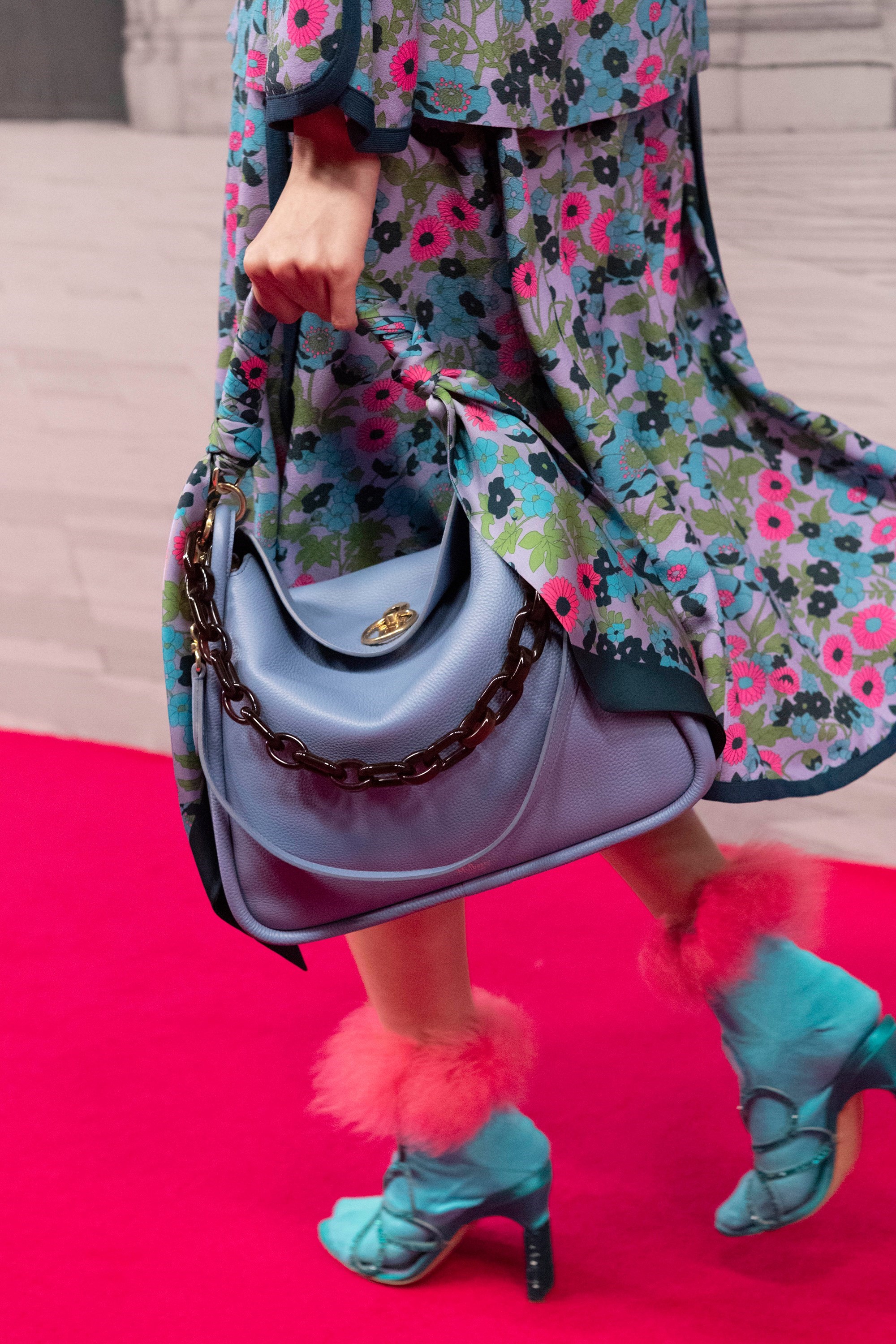His trip to Seoul for Mulberry’s Autumn/Winter 2018 show – a see-now buy-now affair, and the first in the brand’s global show schedule – was only creative director Johnny Coca’s second visit to South Korea. Nonetheless, he seems to have found the vibrant city a natural fit for his own creative predilections. “It’s funny because it’s traditional here, but it’s the opposite of traditional too,” Coca says in the lobby of his hotel. He’s struck by the contrast of older generations with the street-style wearing, individuality-hungry youth culture, he says: “It’s interesting to see that juxtaposition.
“In London it’s exactly the same – the UK is seen as being classic, and traditional, but the new generations are all about eccentricity, being yourself,” he continues. This cheerful combination, in which the old and the new make for happy bedfellows, is something like the attitude he has fostered at Mulberry; pairing the craftsmanship and quality of a British heritage brand with the eclecticism of global perspective, Coca’s Mulberry is simultaneously backwards- and forwards-facing.
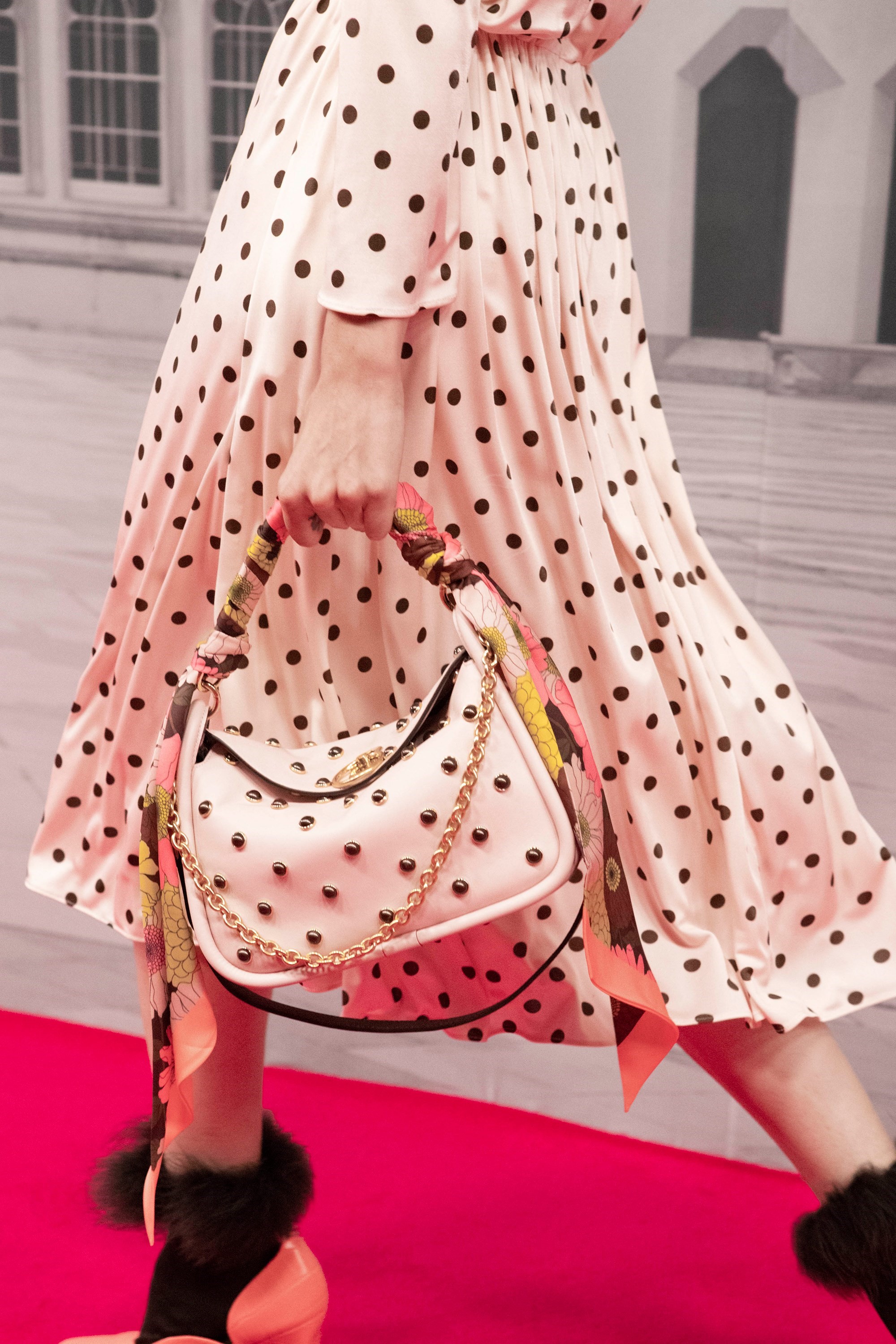
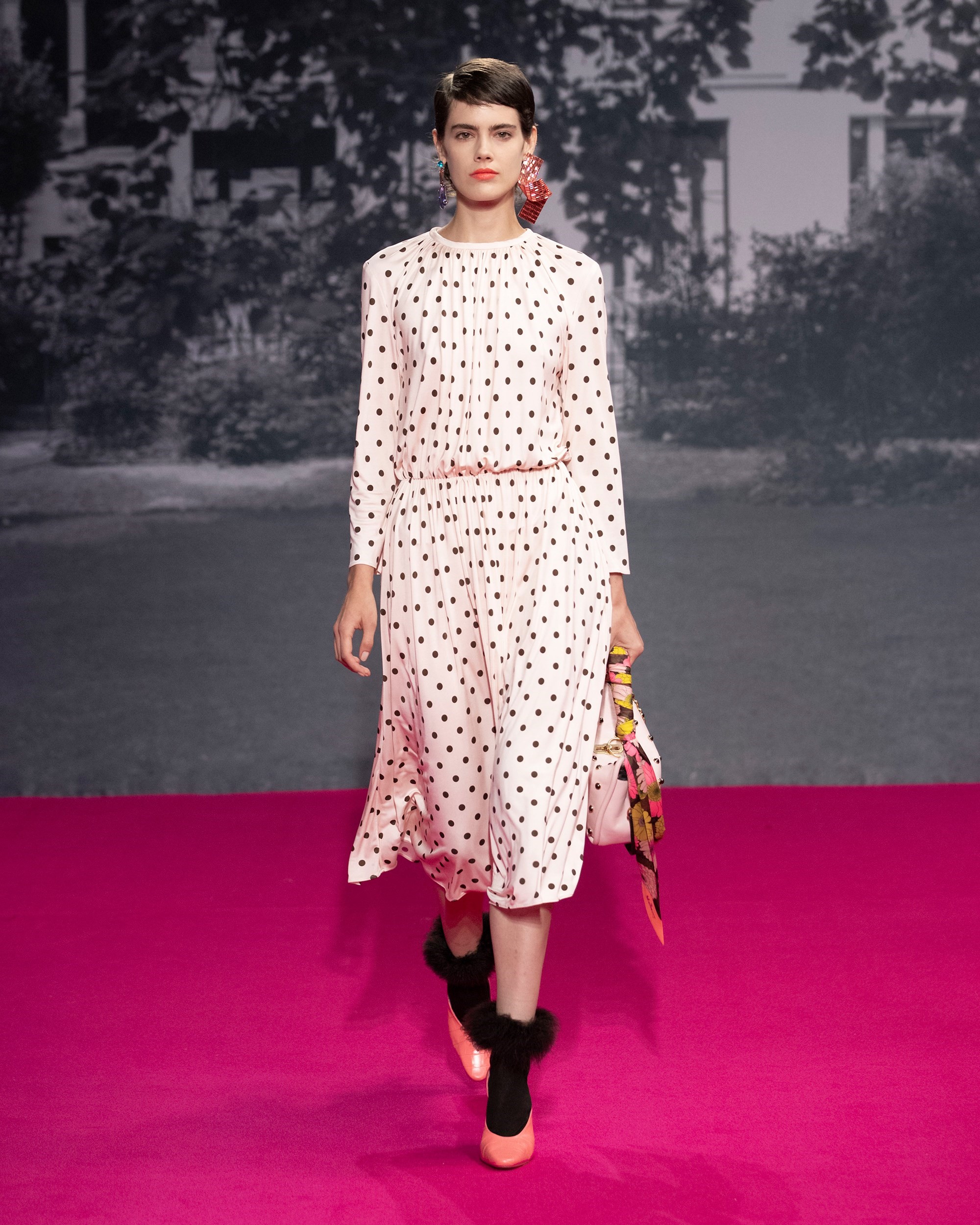
It’s working, too. In the three and a half years since he joined the British brand, which was founded in Somerset in 1971, Coca has sought to reinvent and refine some of its classic styles – a repositioned pocket here, a restructured strap there – while dropping prices (which had soared in the short time before his arrival) and embracing a plan for global expansion. Moves which, to all intents and purposes, have been successful. The future is bright.
The next step towards it is the brand’s embrace of its Korean audience – the second biggest for revenue, after its English customer-base. (When, for its Autumn 2018 issue, Dazed Korea featured Rosé and Lisa from K-pop girl group BLACKPINK on its cover in head-to-toe Mulberry, the issue sold out around the country in just three days.)
The A/W18 collection first appeared to the public by way of a presentation in Paris in March, but last week was shown to its fullest extent inside Seoul’s K Museum of Contemporary Art. Walls papered with black and white photographs of some of contemporary London’s recognisable architectural treasures – the Barbican Centre included – formed a backdrop for the eccentric collection, which draws on 1950s silhouettes and 1970s bohemia to create a vivid and impactful tribute to British eccentricity.
Above all, Coca wanted it to be “sophisticated, more glamorous, more feminine,” he explains, “with this boudoir mood, and all these dresses with all these feathers”. There is a twist to this atmosphere too, though, and it feels innately British. “I was thinking of a girl I saw walking down Kensington Church Street, a posh girl – well dressed, but classic, except that she had violet hair. This is something you would never see in Paris, say in St Germain, but you see it all the time in the UK. The same is true when you go to our factories in Somerset – you see all these people with tattoos and these bright hair colours, nail colours. I’ve worked for so many years at different brands, and I’d go to their factories all the time, and the people working in them were always so classic – white coats, their hair fixed like this. Not in the UK, not for Mulberry.” This juxtaposition, of classic ideas with innovative ones, is precisely what makes Mulberry so British, he says – and serves as such a draw for countries like Korea. “There is this new narration happening [here, in Seoul] about modern, forward-facing fashion – it’s strong. That’s perhaps why there are so many Asian countries looking at what’s going on here.”
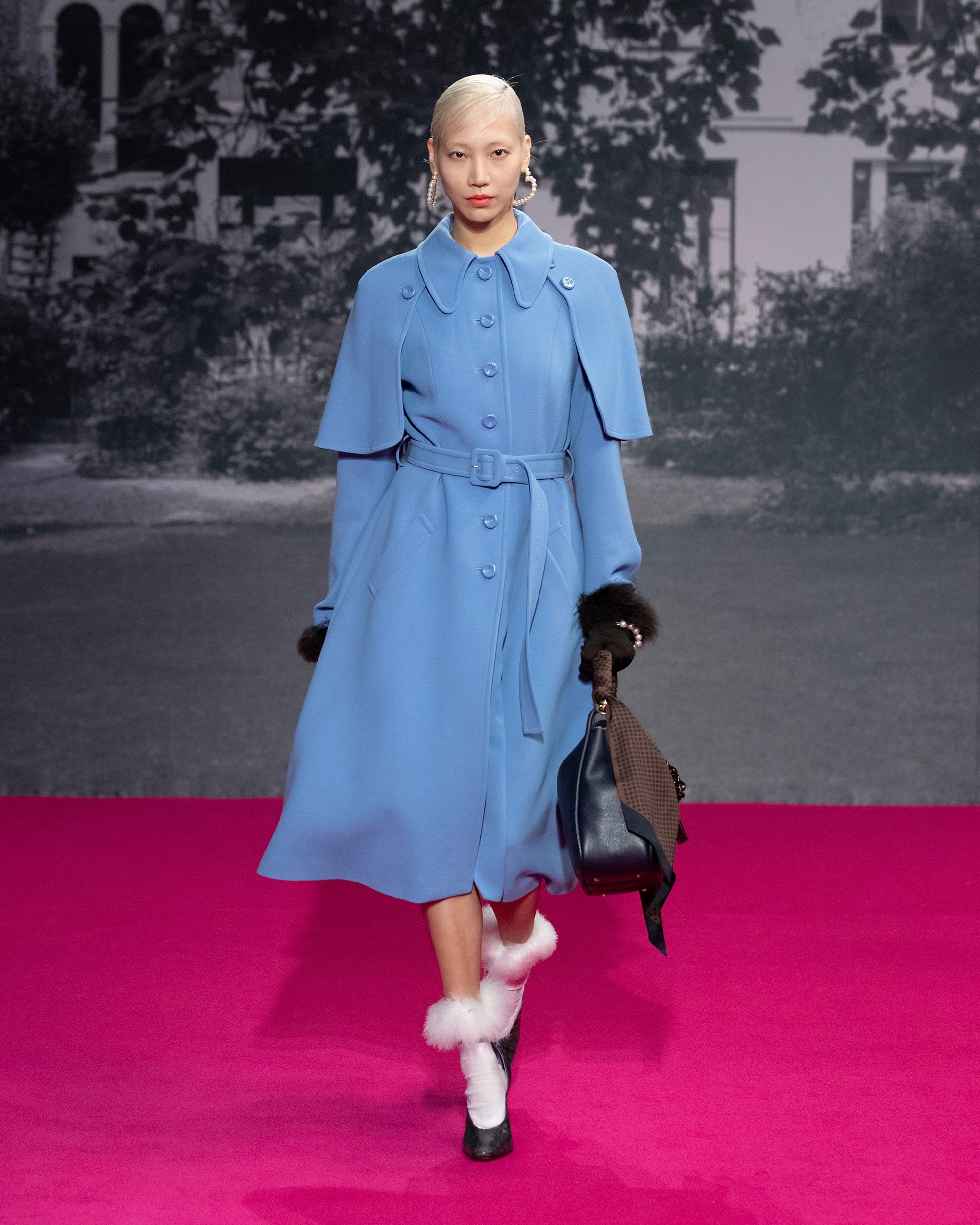
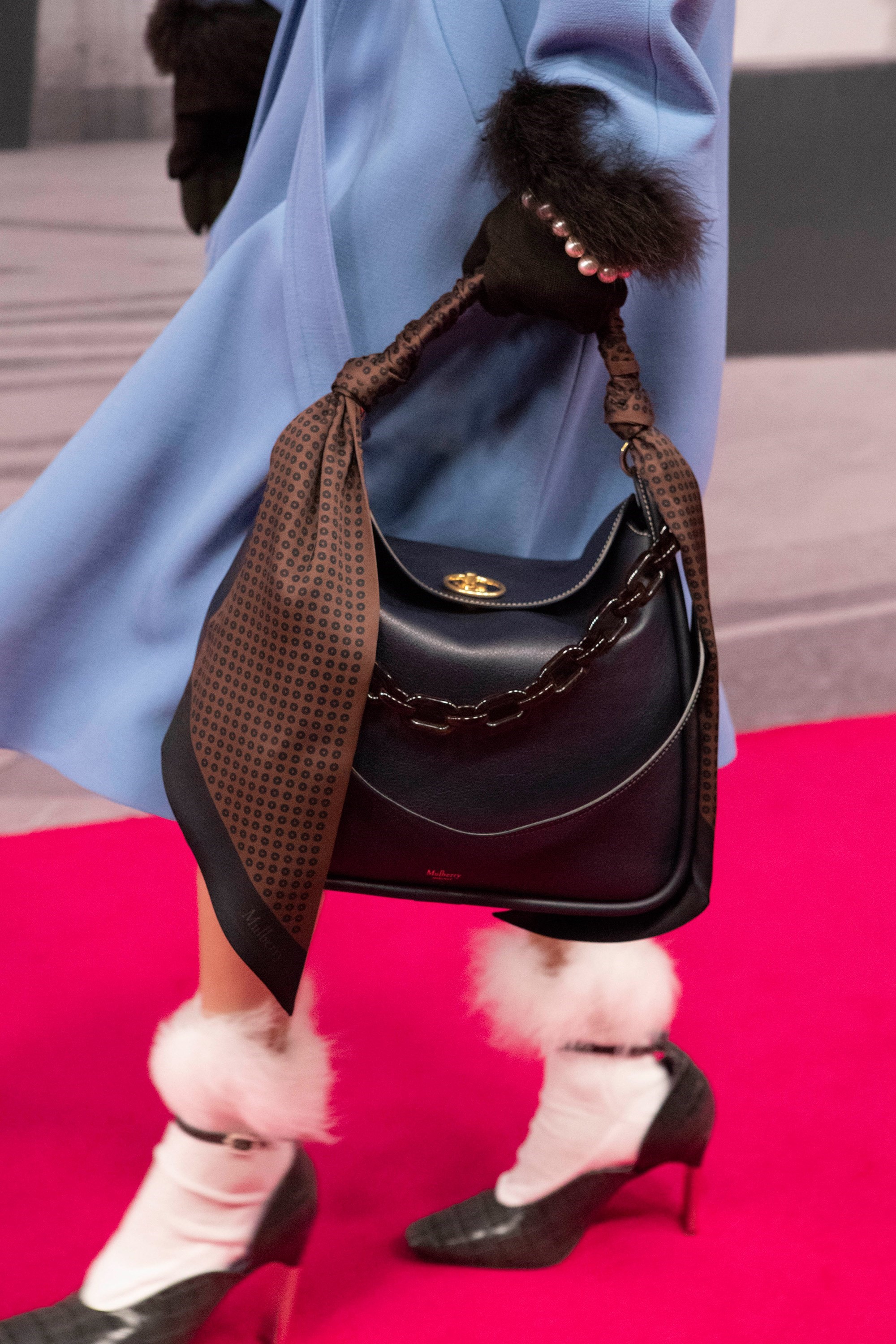
The vivid, playful prints that crop up time and time again in the collection were drawn directly from design tropes, he continues – an apt influence given the designer’s background in architecture and interior design. “We were looking at vintage prints and wallpaper from the 70s, and I was trying to print them on the quilted jerseys, applying them to the classic 50s looks.” While many fall collections present a muted vision, this one feels like a bolt of sunshine. “I said, let’s bring something quite unexpected,” he continues, smiling. “So that’s why it is quite tailored, there are all these very classic jackets, pants, collars, the coat with the shearling, the hats – but then she’s wearing socks trimmed with marabou feathers. There’s a touch of humour.”
Meanwhile, the bags. A/W18 shapes include the Harlow, a compact satchel; the slouchy Leighton, in myriad different colours and embroidered floral textiles; and the small Amberley, in playful glitter finishes, among others. Many are available immediately after the show, both online and in the pop-up shop housed in the museum over the course of the weekend that follows it. All serve to remind the audience what Coca, who designed bags at both Céline and Louis Vuitton before taking up the mantle here, does best – that is, create beautiful, functional pieces that feel of-the-moment and totally timeless too.
Perhaps even better, these are bags are designed with a successful future in mind – and in Seoul, Mulberry’s impassioned followers demonstrate that the brand is well on its way to achieving that. That’s not all for the brand this month, either: next week sees the opening of London’s new flagship, on Regent Street, and the S/S19 collection will be shown for the first time in Paris shortly after. “From the first time I arrived at Mulberry, they asked me ‘what is your objective for the future?’” Coca continues. “And I said, ‘we need to make the brand more international. You can’t focus only on the UK. Yes it is important, and we have our customers there, but it’s important to extend that representation.’ We started with Korea, we have Japan, we have Australia, we have China. It’s a new chapter for us.”
